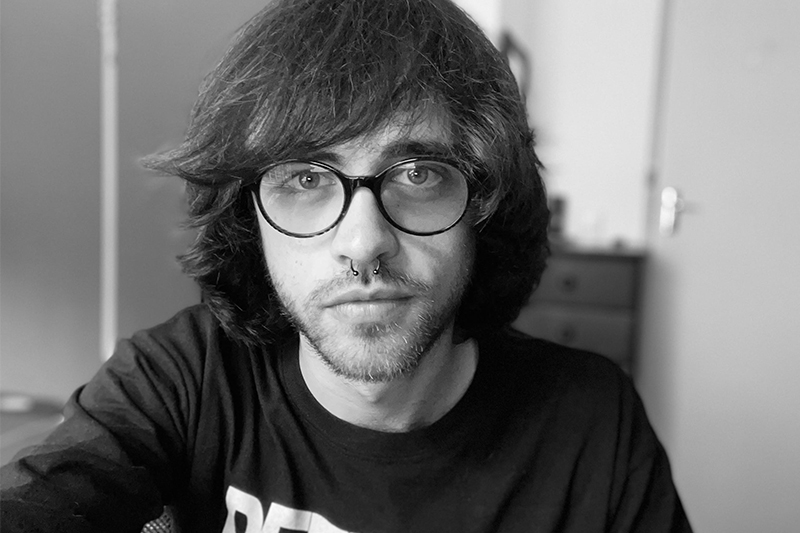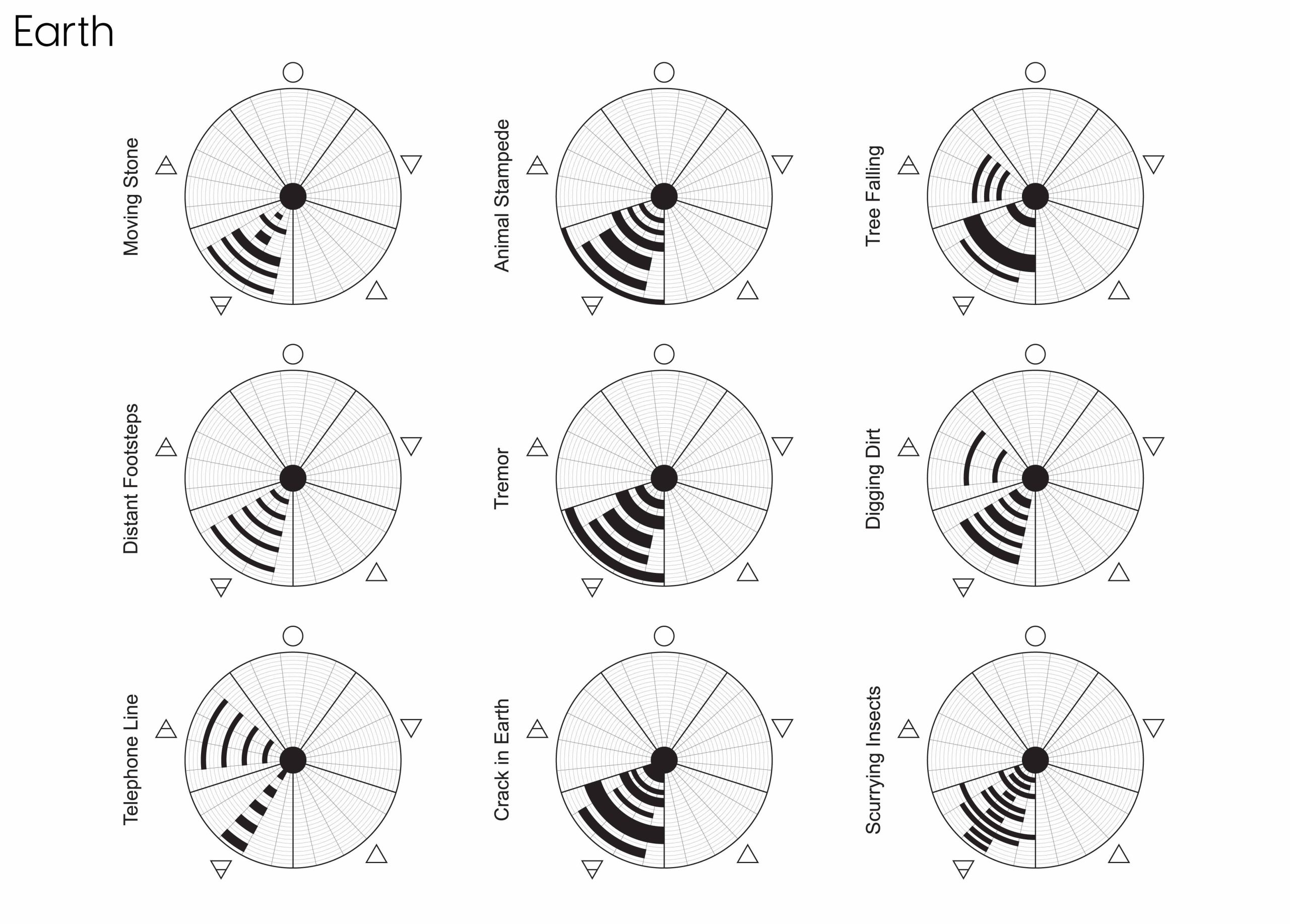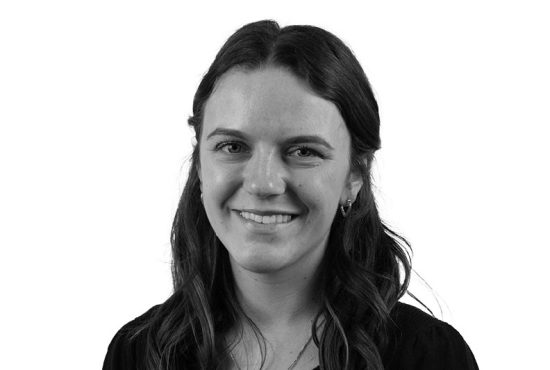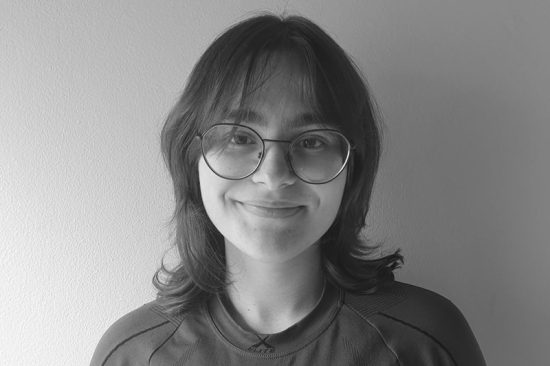
“Symbols—they’ve come with humanity. They’ve grown with us. And they’re part of us.”
TPP45S Of the forty-five visuals you created, which is your favorite? Why?
BRENDAN LEASK Probably the volcanic eruption. I felt like it was the most visually unique and incorporated a nice range of the five elements—four of the five were represented in it, so the symbol spread out in multiple directions.

TPP45S What was your initial response looking at the Phaistos Disc?
BRENDAN LEASK Initially, I would have liked to get a copy of it for myself. Even just a little 3-D model—I thought it was as cool as all relics from the past. Otherwise, it inspired me to create something that could maybe stand the test of time myself. Maybe not in the form of a clay tablet, but—with the way that art is going, and me studying multimedia design—maybe something digital.
TPP45S Why do you think an artifact from the past could be relevant to you and your creative practice?
BRENDAN LEASK Well, in the case of the forty-five symbols, humans have been creating visual metaphors since as far back as we can tell. Symbols—they’ve come with humanity. They’ve grown with us. And they’re part of us. So by incorporating those relics from the past, in more postmodern futuristic design, we can kind of stick to established structure [of visual metaphors] while making our own message.
TPP45S The symbols of Elemental Audiographs are the visual representation of five different elemental sounds. Why do you feel the visual representation of frequencies, in the words of your artist statement, present “endless possibilities” for interpreting nature into design?
BRENDAN LEASK There are hypothetically endless possibilities for representing sound waves because of their physics. Even if the waveforms look similar, they don’t sound the same. And even if they do sound the same, the natural elements that make them up would not be the same—like a volcanic eruption and an earthquake might be similar, but there’s no fire in an earthquake.


TPP45S Your project doesn’t just focus on sounds naturally found in the environment. Instead, you feature audiographs from water, fire, earth, air, and space—which represents disruptive forces that are mostly man-made, like a sonic boom and airplane overhead. Why did you choose to include man-made sound elements in Elemental Audiographs?
BRENDAN LEASK Science is deeply rooted in humanity’s past so it felt natural to include human-made sounds amongst the natural sounds because they [human-made sounds] are natural to us.
TPP4S What does your project tell audiences of today and tomorrow about our current anthropocene and human impact on our planet?
BRENDAN LEASK The symbols are quite chaotic in the way a lot of the grid was left in for added texture—and that could represent the chaotic nature of the modern world. The sounds in nature are a condensed form of chaos.
TPP45S What do you believe are the biggest challenges of this upcoming generation of visual artists/designers?
BRENDAN LEASK I think social media is perhaps one of the biggest problems—as with most industries, not only does social media give us great examples to look at for good design, [but] by seeing so much good work out there, it’s hard to know if you’re making good work yourself. And the growth of the Internet is a bit of a problem as well. There’s too much space to make your name—it’s kind of contradictory.
TPP45S Do you have any advice for anyone facing those issues?
BRENDAN LEASK Find peers, build teams, and network—make those relationships last for mutual benefit. If you find collaboration difficult, work on it, but also ensure you work diligently alone.
TPP45S The humans who created the Phaistos Disc—if it’s not a hoax—will never be able to tell us what its forty-five symbols mean. But you are here with us today, to talk about your own set of forty-five symbols. What is it that you hope people take away from your project?
BRENDAN LEASK What I really want viewers to get from my symbols is the idea that chaos can be tamed—or perhaps harnessed—and used to create something that appeals to humanity’s desire for structure and organization. Nature itself is inarguably a complex system, and the physics of sound are no different. By simplifying and combining these two forms of chaos in a grid, that chaos can be made consistent.


TPP45S You were originally studying sound engineering, but are now pursuing design. Why did you decide to change careers? What has the transition from sound engineering to design been like?
BRENDAN LEASK The transition from engineering to design was not a snap decision, but the culmination of years worth of my interests and hobbies. Just before COVID-19 hit, some personal experiences led me to a point where I felt isolated. Because of that, in 2019 I had only completed 95 percent of my first-year subjects, 70 percent of my second-year subjects, and about 30 percent of my third-year subjects. When a sound engineering student has outstanding work requirements, they have to book extra time in physical sound studios with other students to get that work done. Then, enter COVID—even though I wanted to engage with those projects, booking physical spaces was out of the question. During the pandemic, I spent a lot of time with video games and used what I learned studying sound engineering to listen to and immerse myself in those worlds. I then started scuba diving which enhanced my listening skills even further and taught me how to see rather than just look. By the end of 2021, inspired by the feeling of power in exploring unknown worlds, I started a short course on pixel art which sparked an interest in the creative field. After attending an open day at my current college, the rest is history.
Elemental Audiographs was an ode to my past studies [as a sound engineer] and my current studies [as a multimedia designer] so the project was more of a message to myself. But if anyone were to take something away from my story, I would say persevere when things look dark, because although sound studies didn’t go all too well, I was able to create forty-five semi-decent symbols based on that knowledge. Even if you go from one place to another, there’s always a connecting gap [between the two] and a use for something that you’ve learned in the past.

Brendan Leask
Brendan Leask is pursuing a BA in Multimedia Design at Greenside Design Center in Johannesburg, South Africa. His current work focuses on UI and interaction design and animation, but he is also interested in coding and game design. He previously studied Sound Engineering and is eager to combine his current and past studies to create visual work when the opportunity presents itself. He is working towards being able to build immersive experiences by combining our natural and digital worlds into augmented or virtual realities.
Elemental Audiographs
Honorary Mention Open Call 22/23


